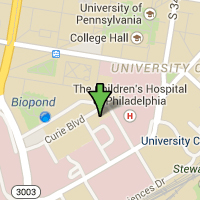Protocols and Software
ASSAYS TO STUDY MICROTUBULE MOTIONS IN VITRO:
- Manufacturing reusable flow chambers
- Preparation of coverslips
- Preparation of GMPCPP-stabilized microtubule seeds
- Attachment of microtubule seeds to the coverslips
- Preparation of segmented microtubules.
Video illustrating protocols 1-5 (Volkov et al., 2014)
- Experimental observation of the protein tracking with depolymerizing microtubule ends
- Preparation of streptavidin-coated beads
- Preparation of unevenly coated beads
- Recording the photobleaching kinetics for the fluorescently labeled protein molecules
APPROACHES TO RECONSTRUCT AND ANALYZE KINETOCHORES IN VITRO
Protein purifications
Microscopy assays
- Quantitative analysis of fluorescence intensities of mi3-based particles
- Quantification of the photobleaching rate for mi3-based particles with dual-color proteins
- Binding of fluorescent proteins to mi3-based particles with dual color proteins
-
TIRF microscopy assay to study the interactions between monomeric CENP-T and soluble Ndc80
-
TIRF microscopy assay to study the interactions between clustered CENP-T and soluble Ndc80
-
Quantitative analysis of the molecular size of fluorescent molecules and clusters
-
Analysis of photobleaching rate of monomeric and clustered fluorescent molecules
ASSAYS TO STUDY DENSE GRANULE SECRETION AND CALCIUM OSCILLATIONS IN INDIVIDUAL PLATELETS
Protocols
- Fluorescent measurement of dense granules and intracellular calcium in individual platelets in microfluidic flow chambers
- Immobilization of PECAM-1 antibody on the coverslips of the microfluidic chambers
- Quantitative analysis of dense granules and intracellular calcium in individual platelets
Source codes
- Quantitative analysis of kinetics of dense granule secretion and calcium oscillations in individual platelets (Manual | Source Code)
- Quantitative analysis of kinetics of dense granule secretion and calcium oscillations in platelet population (Source Code)
IMAGE ANALYSIS
- Correcting for unevenness of illumination
- Determining the intensity of single fluorophore
- Quantification of bead brightness Protocol | Source Code
SOFTWARE
- CENP-E tip tracking (Gudimchuk et al., 2012) Manual | Source Code
- Molecular-mechanical model of the dynamic microtubule (Zakharov et al., 2015) Manual | Source Code
- Tethered Cargo Motion (TCM) Monte Carlo simulation software (Gudimchuk et al., 2018) Manual | Source Code
ULTRAFAST FORCE-CLAMP APPROACH TO STUDY FORCE-DEPENDENT SLIDING OF MICROTUBULE-BINDING PROTEINS
Programs for instrument control written in LabVIEW 11.0 are provided as an archive UFFC software. This archive contains:
1. Description\Description.docx. – This file contains detailed information about the content of all folders
2. Programs\ - This folder contains programs to run the UFFC instrument in Grishchuk’s lab
- AOD FC by FPGA 01.19.19\AOD FC by FPGA 01.19.19.vi – LabVIEW program for execution of UFFC
- AOD FC by FPGA 01.19.19\SubVI\V_nm_converter_VD.vi – LabVIEW program for conversion of recordings with QPD voltage into the beads’ or pedestal’s positions
- FPGA_FeedBack_AOD_control 09.04.2020\FPGA_FeedBack_AOD_control 09.04.2020.vi - LabVIEW program for compiling the FPGA firmware FPGA_FeedBack_AOD_control 09.04.2020.lvbitx
- FPGA_FeedBack_AOD_control 09.04.2020\FPGA_FeedBack_AOD_control 09.04.2020.lvbitx - FPGA firmware for UFFC feedback loop generated via the FPGA_FeedBack_AOD_control 09.04.2020.vi and LabVIEW FPGA Module
3. Calibration file examples\ – This folder contains example calibration files for QPDs in UFFC assay
- QD1.txt, QD2.txt, QD3_stage.txt - Examples of the x and y calibration files for QPDs monitoring the trapped bead 1, trapped bead 2, and pedestal bead
- QD3_stage_Z.txt - Example of the z-axis calibration file for QPD monitoring the pedestal bead
4. Raw data example\ - This folder contains raw data file “4.0pN_.txt” generated in UFFC experiment with free dumbbell and 4 pN clamped force
Programs for analysis of experimental data are provided in an archive analysis software in folder 'analysis of UFFC recordings'
This folder contains programs for analysis of raw UFFC recordings. The programs were written in MATLAB R2016b and Python 3.9+ Jupiter notebooks
- README.txt – Description of the folder content
- Build_and_analyze_vel_hist.m – This program generates histograms of instantaneous dumbbell velocities and fits them with Gaussian function
- Automatic_event_detection.m – This program detects continuous interaction events
- Collect_all_sweeps.m – This program collects all interacting sweeps from a recording. The output file is used as an input for the exp_sweeps_fitting.ipynb program

